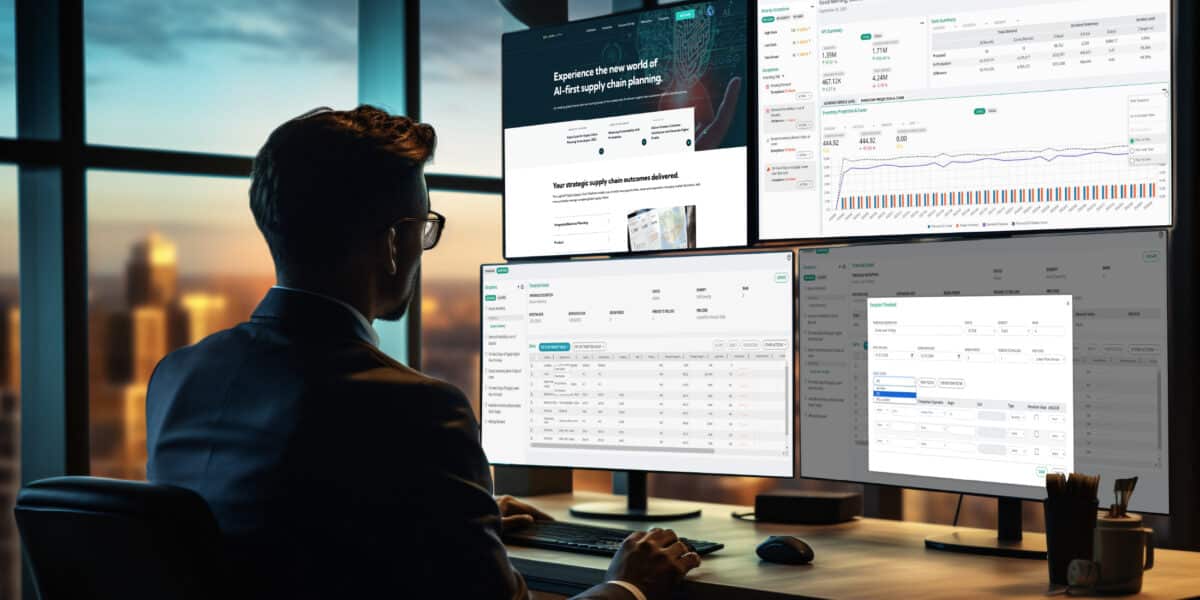
Supply Chain Planning: The Gratifying Career Choice
This is that time of the year when many people around me are getting ready to send their children off to college. That, combined with the last two years of massive supply chain breakdowns keep raising a question in my mind from time-to-time. Why don’t more kids want to grow up and solve the complexity of global supply chains? Why are young adults not opting to make a career out of optimizing the world’s supply of pretty much everything? The more I think about it, it boils down to the lack of awareness about what it takes to tread the supply-chain path.
Supply Chain Planning Career: An Increasingly Complex Field
It is quite natural for a youngster to draw inspiration from a childhood physician, or a news headline about a rocket launch or a classroom visit by an army vet to think that he/she would like to become a doctor or a scientist or a soldier. However, much of the work to lay out supply chains happens behind the scenes. All one sees is food on the table, the next new gadget, trending fashion – all of these have much to do beyond the farmer who grew the produce or the assembly line worker who put the gadgets together or the machines/people who cut/knit/sewed the fabric. There are many disciplines, like science/engineering, marketing, finance, and operations, that come together to put the end-product in the hands of users. Add that to some of the immediate needs-of-the-hour, i.e., making our planet greener, to incorporate sustainable practices so the world’s population does not deplete resources.
Supply chain problems are far more complex today than they used to be even twenty years ago when the world was more localized, there were a billion fewer people on earth, and trading across geographic boundaries was a lot more prohibitive.
Over the last decade, technology has made noticeable strides in many aspects of our lives. A good example is accelerated adoption of automation, whether we know it or not. We buy our necessities online twice as much as we did before, we no longer need travel agents to book our trips, and our money transactions do not need a trip to the bank anymore. However, most of the complex web of global supply chains are still planned through excel spreadsheets. What gives? Much of it has to do with not enough awareness among talented college students and young adults about how their math, science, finance, or social skills can be applied to this much-needed area of our lives. In the US, there are only around 150 colleges that offer supply chain coursework, including certificate programs. By comparison, that number is around 500 for engineering and marketing programs each, for bachelor’s degrees alone.
Technologies like AI Upgrade the Role of Supply Chain Professionals
Supply chains are fun to explain and game-like to navigate. There are not many career functions that bring together complex mathematical operations/optimizations with business concepts and soft skills. The role of a supply-chain planner is one such function, even if lesser known or pursued.
A supply or demand planner is central to the bottom line of organizations because their analysis and input are key to what and how much a company sells. The new world technology eco-system has paved the way for many solutions that planners use. Most of those solutions are no longer grounded in excel spreadsheets, but use state-of-art AI models, complex business insights, and scalable data solutions that make decision making for planners a lot more strategic than it used to be. It is immensely gratifying to be able to explain the complexity of everyday problems to just about anyone, because most people can relate to any current supply crisis in the world. What is lacking is adequate entry of young, high potential professionals in the field due to a lack of awareness of the possibilities of a supply chain planning career.
Engaging students to build innovative supply chains of the future
Where does the awareness begin? Well, nothing in the past has provided as many real-life examples of supply-chain breakdowns as did pandemic years. No one was left untouched by shortages of essentials during this period in one form or the other. This is the perfect time to explain the “why”.
As we dive into each scarcity we have witnessed around us in recent years, the fascinating world of supply opens up quite clearly. Some elementary and secondary school programs are starting to incorporate principles of supply chains in school curriculums through concepts like “The Lemonade Stand” that make it fun and easily explainable to children. Examples of unsustainable and irresponsible supply chains are all around us and make great yet simple thought-provoking studies. But they are not nearly adequately integrated into our educational curriculums yet.
To engage more of the younger generation in building innovative supply chains of the future:
- More supply chain publications should be made geared towards younger school-age children.
- Elementary and secondary schools should include programs in their curriculum to help students simulate real-life supply situations.
- More college and university offerings should be available for blended coursework that prepare students for supply-chain careers.
- Industries whose bottom-lines depend on supply chain efficiency should invest in funding supply chain programs in colleges to build a robust internship and training programs for new graduates.
There is a glaring shortage of strong supply-chain professionals in the world today, despite advances in technology adoption in how organizations navigate this complex domain. This poses one of many risks to the future of supply chains. Raising awareness and breaking the myth of outdated supply-chain systems is the responsibility of everyone who navigates this space as well as educators and organizations that thrive on lean supply chains.
Need more? Our eBooks, executive briefs, and whitepapers give a more in depth look at the complexities of the supply chain and different solutions to solve them. Get free access here.


